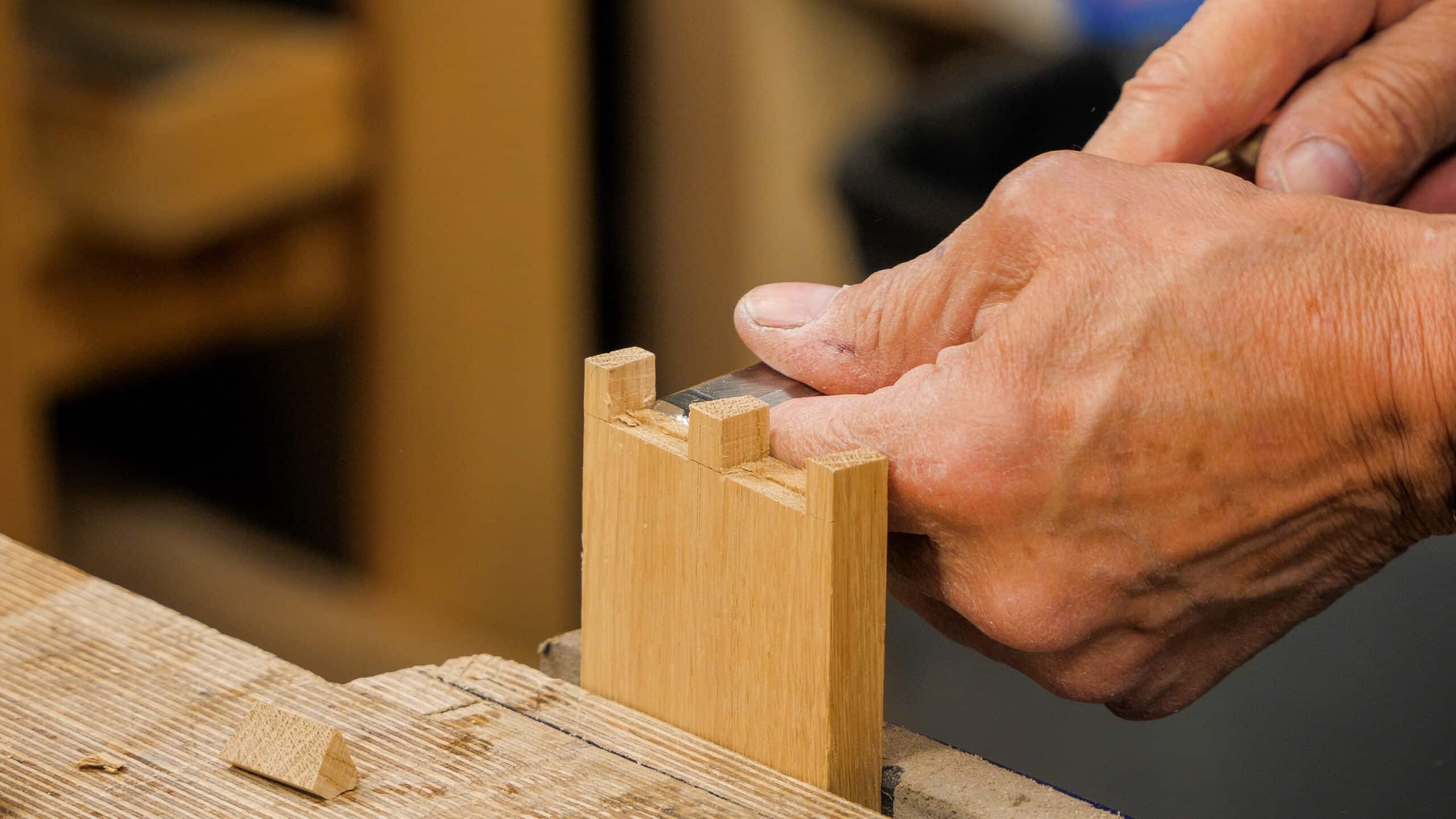Sellers Home Drinks Cabinet: Episode 6
Posted 27 July 2022
This is an episode in a paid series. Want to watch it? You just need to sign up as a paid member, and you can enjoy this video and many other videos we think you will love.
Paul went into a detailed explanation in this dovetailing of the drawer for the drinks cabinet for everyone to truly master drawer making. It’s the small details that these explanations demonstrate, and we hope that you truly enjoy the whole process of dovetailing for the rest of your life. Oh, and the videography throughout the episode is stunning for everyone to learn through too. You don’t see this normally. Superb! The calm serenity captured in a man’s work, the confidence, and the love of the craft. You’ll enjoy seeing the whole drawer come together by every stroke of the different planes Paul uses and then, too, the dovetails tying the whole together and glued up. Such a beautiful art form!


I really enjoy the editing and post production of these videos. The music, both original and canned add to my enjoyment. In this series however, you’ve let the tools sing. Most enjoyable.
Thank you for the lovely feedback!
Nice … Thanks again Paul.
I like the quiet, only natural sounds of the work Paul’s doing but I also miss Paul’s commentary as he’s gluing up or otherwise demonstrating/completing a task (even if it’s a “redundant” task). Not bad editing finding a mix between the two. I could however do with more of Paul’s advice, words of wisdom & experience.
This series on basic cabinet making is excellent. No pretense, simple design, good quality, instructive shots of the work itself. Using the common dovetail and rebates throughout is a great way to reduce variables for those of us trying to build up some level of consistency / fluidity / “mental ease” in cabinetry. Thanks very much to everyone in the pipeline for producing such excellent work!
Did Paul explain why he chose to use a false front on his drawers in this piece rather than his usual method of half blind dovetails? Looking at various drawers with false fronts in my house, and elsewhere, it seems they are usually used for several purposes. First, to cover up the inexpensive plywood from which the main drawer is made. Second, for kinds of drawers which are not made to fit flush. This might be done because flush fitting is hard, because the drawer box is made smaller than the opening to accommodate metal slides which are then covered up by the false front, or because one likes the look. For example, my kitchen drawers are made out of cheap plywood, and have unattractive metal slides requiring that the drawer be made significantly smaller than the opening. Their false fronts cover all that up. But none of that is relevant in the case of Paul’s drinks cabinet. So I wonder why he chose the false front. Thanks!
I asked Paul and he reply:
No reason really! I often do things like that just to show an alternative.